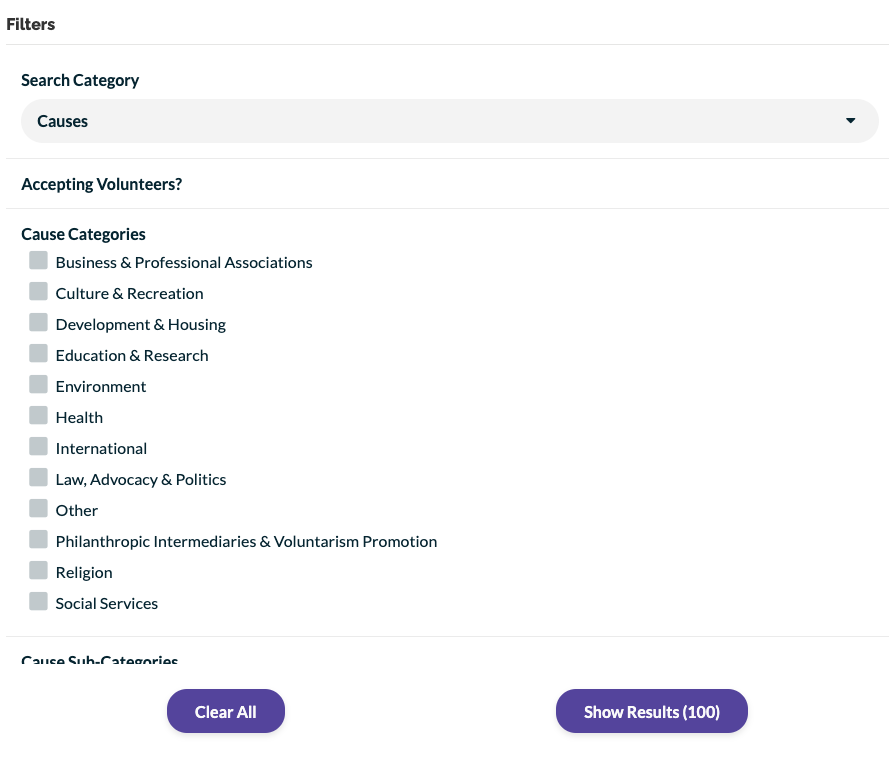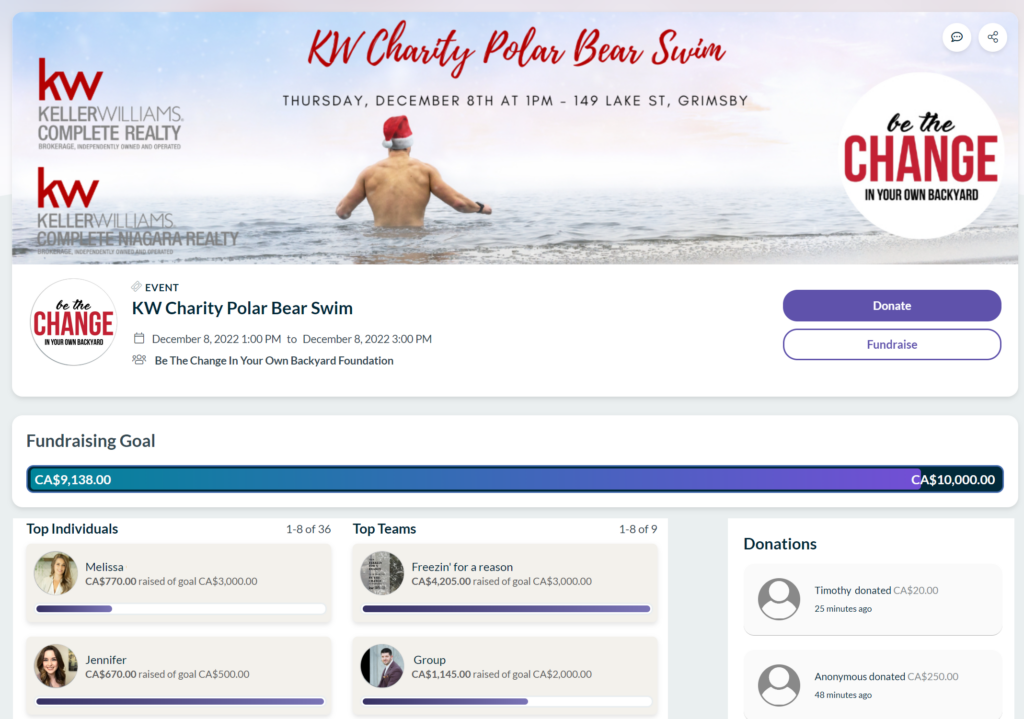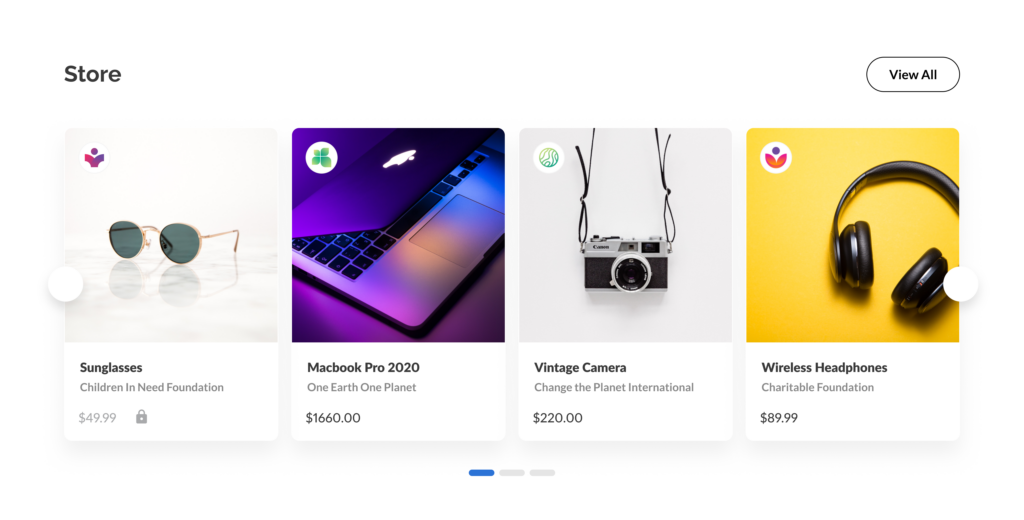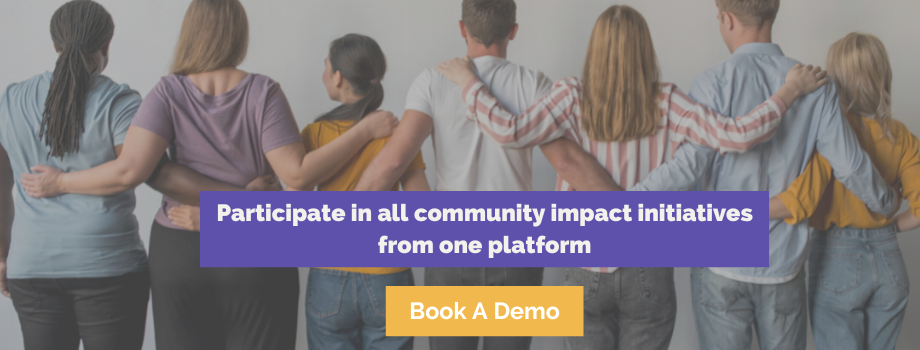“Great acts are made up of small deeds” — Lao Tzu.
When combined with the contributions of others, a small act of kindness can have a significant, positive community impact.
In 2021, individuals gave $484.85 billion to charity. Whether an individual donated $5 or $500, these contributions were pooled together to create a better world, with billions donated to charity.
In the above statistic, it is evident that when a large number of people contribute to a charitable cause, greater results are achieved. Now, imagine the positive community impact your organization could have by uniting your employees and taking part in social good.
Whether you are an enterprise of 1,000 employees or a small business of 25 employees, participating in social good enables your organization to be a part of a solution. A solution that provides local nonprofits and charities with financial assistance, an extra set of helping hands, and more awareness around their cause. A solution that, without the help of your business, wouldn’t be within reach for a nonprofit or charity to achieve.
Having a positive community impact starts with your company investing in the community, undertaking just one social good initiative, and enlisting the support of your employees.
This blog covers 4 initiatives your organization can undertake to have a positive community impact:
What does community impact entail?
Community impact refers to the positive effects an organization has on the communities it interacts with. These are the communities where an organization works and lives, the communities that once served them.
Making a positive impact doesn’t have to be a huge undertaking. Rather, performing small acts of kindness over time as an organization can have a momentous impact on the communities that nonprofits and charities assist.
An employee involved in a giving program might see a $50 donation to their favorite charity as a small gesture. However, it could be the final push that allows a charity to reach its fundraising goal and make a life-changing difference for the underprivileged individuals it serves.
An organization might view a fundraiser as an engaging activity to bring its employees together. However, a company-organized fundraiser will enable staff from a charity or nonprofit to devote their time to administrative tasks they weren’t able to do before.
Why should organizations give back to the community?
Giving back is mutually beneficial for nonprofits and businesses. Nonprofits and charities won’t only receive extra levels of support so they can fulfill their mission every day, but businesses will have the ability to ignite change and make a lasting difference in the community.
Beyond the moral imperative of giving back, there are commercial reasons why businesses should become involved in their communities. Stakeholder preferences are shifting; consumers, investors, and employees alike expect a business to do more than turn a profit. As stakeholders’ values are everchanging, businesses must adopt this new paradigm:
- 46% of consumers pay close attention to how a company addresses social and environmental issues when making purchase decisions.
- 83% of investors are more inclined to invest in a stock of a company well-known for its social responsibility.
- 75% of employees and job seekers expect their employer to support local community causes through donations or volunteer efforts.
How to have a positive community impact
Community impact starts with discovering and connecting with the right causes. The opportunities that will unfold for your business to take part in rest on the nonprofits and charities you partner with.
If partnering with a cause is new or unfamiliar territory for your business, below are a few tips for choosing the right cause(s):
- Where to discover causes- A social impact platform enables your business to find causes based on geographic location, category, or sub-category.

- What causes to choose- As a social impact platform filters causes by category and sub-category, choose categories that match your organization’s interests (and the interests of your employees). Based on the list of causes the platform comes back with, choose a maximum of 10 causes to connect with at first.
- How to connect with causes- Find the appropriate contact from the selected charity or nonprofit and send them an email relaying:
- Why your organization wants to get involved with their cause.
- How your organization can lend support.
- What shared goals you would like to work toward.
Once the foundation for the relationship has been established between your organization and a local cause, the activity begins. Below are 4 ways your organization can positively impact the community:
1) Donations
Aside from charging membership fees and accepting government grants, nonprofits and charities rely on corporate donations to fulfill their mission.
When a donation is made, causes can continue to provide for their communities. Whether that is a local YMCA offering afterschool care for families in need or a local Humane Society that houses abandoned and rendered animals, a donation from your organization makes these services possible.
As you give to different causes throughout the year, there are some you will donate to sporadically, and there are others you will make automatic donations to, either monthly or quarterly. Regardless of how frequently you donate, remember that regular giving, even a small amount, is beneficial for any charity or nonprofit.
2) Volunteer days
When a nonprofit or charity hosts a food drive, beach clean-up, or a reading program, they rely on the help of their community supporters to assist with these activities. Nonprofits and charities have a limited number of employees; therefore, their annual programs wouldn’t be nearly as successful without external help from their generous volunteers.
Aside from hosting a company-wide volunteer day, your organization can provide employees with 4-paid volunteer days per year. These paid days will encourage your employees to discover, connect, and contribute to causes in their community that they are passionate about on an individual level.
As mentioned above, a company-wide volunteer day can also be organized in which an organization selects a charitable cause to support and plans the logistics for a volunteer day. Here are some guidelines on how to organize a volunteer day:
- Reach out to the nonprofit or charity and let them know you are interested in hosting a volunteer day on their behalf.
- Suggest a volunteer day activity that aligns with their mission (i.e., if their mission is to improve food insecurity, a food drive or soup kitchen would be an ideal volunteer activity).
- Once a day, location, and activity for a volunteer day are selected, rally the support of your employees. Post the volunteer opportunity on a social impact platform (where attendance and employee input can be tracked).
3) Fundraisers
A fundraiser enables your organization to provide financial aid to a cause by gathering voluntary financial contributions from your network. Let’s break down the three main types of fundraisers:
- Crowdfunding campaign– A page created to collect funds from your employees, corporate partners, investors, and customers to help a cause. Crowdfunding can support a specific need, project, or program that a nonprofit or charity is working to bring to fruition. When setting up a crowdfunding page, be sure to voice the mission of the cause and discuss how the donated funds will be distributed to create maximum transparency.
- Peer-to-peer fundraising– Unlike a crowdfunding campaign with a single page hosting all donations, a peer-to-peer fundraiser has multiple campaign pages. For example, each one of your employees who wants to raise money for The United Way can set up an individual peer-to-peer fundraising page and reach out to their personal network for donations. As multiple fundraising pages are set up and powered by direct word-of-mouth, peer-to-peer fundraising brings in exponentially more donors.
- Third-party fundraiser event– An event planned and executed by your organization on the nonprofit or charity’s behalf, with all of the proceeds going towards that cause. Examples of third-party fundraisers include golf tournaments, walk-a-thons, or BBQs. Fundraising events offer current supporters the opportunity to interact in person with a nonprofit or charity, as well as fundraise in teams or individually prior to the event.

4) Cause-related merchandise
Some causes might already have branded merchandise they are selling through their website to help fund their mission, such as sweatshirts, t-shirts, water bottles and backpacks.
Your organization can partake in the sales process, reaching out to your employees, corporate partners, investors, and customers in order to sell your own branded merchandise for a good cause.
Cause-related merchandise can be sold through your company website or, better yet, a social impact platform that is visible to hundreds of community supporters ready to lend to make a purchase. Choose which types of merchandise you would like to sell on behalf of the cause and add these items to your online storefront.


The power of one organization is undeniable, and no good deed goes unnoticed. Whether a company donation is made, a fundraiser is held, or cause-related merchandise is sold—these small acts of kindness band together to create a positive impact on the communities you serve.



